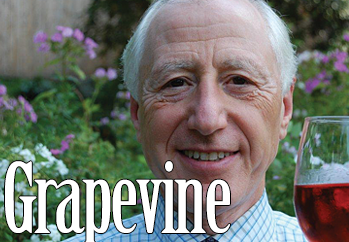Living in the Golden Age of Wine Selections
Opinion Advocates for ideas and draws conclusions based on the author/producer’s interpretation of facts and data.
 Today’s wine market is unlike any in the history of the retail wine trade. Never has there been more wine available at such high-quality levels and at such reasonable quality and price thresholds.
Today’s wine market is unlike any in the history of the retail wine trade. Never has there been more wine available at such high-quality levels and at such reasonable quality and price thresholds.
Think about it. When was the last time you opened a bottle of wine, poured it, tasted the first sip and complained about the quality? When was the last time you experimented with an inexpensive bottle and were so disappointed you poured the remaining wine down the drain? Or, when was the last time you splurged on a bottle and were disappointed in the quality of the wine?
As with many markets, much of success is perception. A perception of the source of wine, a perception of the price of wine and a perception of the expansiveness of wine supply chains. While the reality of the wine market is as I’ve described, there are multiple factors that cloud the state of the industry today.
First, while the choices/quality of wines is at an all-time high, the wines being produced are in the tight control of a small number of mega producers. Consider a statistic I’ve quoted on numerous occasions: 84 percent of the wine produced in the United States is from 2 percent of the wineries. Now that’s economy of scale – and significant savings to consumers. But it makes for a rather homogeneous selection. There’s not much diversity in a wine that is produced in annual quantities measured in hundreds of thousands of cases. Yet this is the 21st century business model.
Second, the other 98 percent of the wineries are much smaller, the majority producing less than 5,000 cases per year. There are over 9,000 wineries in the United States, nearly half of them in California. Yet these wines are not well-represented on retail shelves.
Why? The top 10 distributors in the United States control over 50 percent of the retail market, and by extension, shelf space. As big businesses, their priority is repeat sales. Wineries producing less than 5,000 cases cannot sustain long-term retail popularity. Brand loyalty is the ever-elusive goal of distributors and winemakers. If they are unable to consistently offer the consumer what they want, the fickle consumer moves on to the next brand. Today, there are excellent wines that are not able to gain traction through the current retail model.
Third, wine offerings in the mass media continue to grow. While representing a small portion of annual wine sales in the United States, private label clubs have attracted a loyal following. Have you ever been seduced by an introductory offer of 12 bottles for $69.95? Have you ever attempted to repurchase the same wine? These private clubs, many of which are promoted under the banners of national newspapers, are enticing but rarely satiate long-term appetites.
Fourth, direct winery sales are beginning to gain popularity. Whether via a club structure, such as the mass media type above, or mailing list subscriptions, this is an excellent means to find small production wines made by passionate winemakers. I am a subscriber to the mailing lists of several California wineries. Periodically I receive e-mail offerings of new releases. Several wineries require an annual commitment; others are of the pick-and-choose, no-obligation nature.
Yet, for all these choices and perception-quashing opportunities, there remain a significant number of wines that fly under the radar. These winemakers are faced with multiple challenges in selling their excellent wines, among which are small production, smaller marketing budgets and even smaller capital resources. At times the only means to become aware of their existence is through local word-of-mouth. This requires a trek down dusty, winding country roads. I have undertaken multiple expeditions to several wine regions, notably California, in search of little-known jewels. I have rarely been disappointed.
But the challenge is formidable. In my next column I’ll regale you with several of my exploits.
Nick Antonaccio is a 45-year Pleasantville resident. For over 25 years, he has conducted wine tastings and lectures. Nick is a member and program director of the Wine Media Guild of wine journalists. He also offers personalized wine tastings. Nick’s credo: continuous experimenting results in instinctive behavior. You can reach him at nantonaccio@theexaminernews.com.
